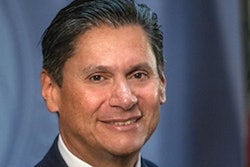 Dr. Doug Shapiro, vice president of research and executive director of the National Student Clearinghouse.
Dr. Doug Shapiro, vice president of research and executive director of the National Student Clearinghouse.
On Thursday, experts from the National Student Clearinghouse (NSC) joined with leaders from the community college and educational nonprofit worlds to talk about the changes ahead.
The new normal, in which a four-year path to a four-year degree is less standard, will require an understanding of the breadth of the education community, said Roberta Hyland, chief data officer of the NSC. New measures of success will have to be developed, reflecting more individualized student goals and preferences.
Classic higher ed measures like persistence and retention are already being adapted for the times, according to Dr. Doug Shapiro, vice president of research and executive director of the NSC. In studying students with some college and no credential, the NSC saw that some stop-outs were planned and that students might be planning to alternate time in the workforce and at school. This led to the creation of a measure that tracked if students returned to school over a longer time frame, which they called perseverance.
Institutions will also need to collect data that goes beyond standard measures like courses and into more subtle areas, according to Shapiro. Data scientists will need to try to measure quality of skills and learning in both educational and employment environments.
 Lori Lindenberg, district director of enterprise analytics and strategy of the Maricopa Community College District
Lori Lindenberg, district director of enterprise analytics and strategy of the Maricopa Community College District
This last form of data highlighted a concern raised by Shapiro: that the new data must be paired with an understanding of the impact of bias—both historically and in the present day.















